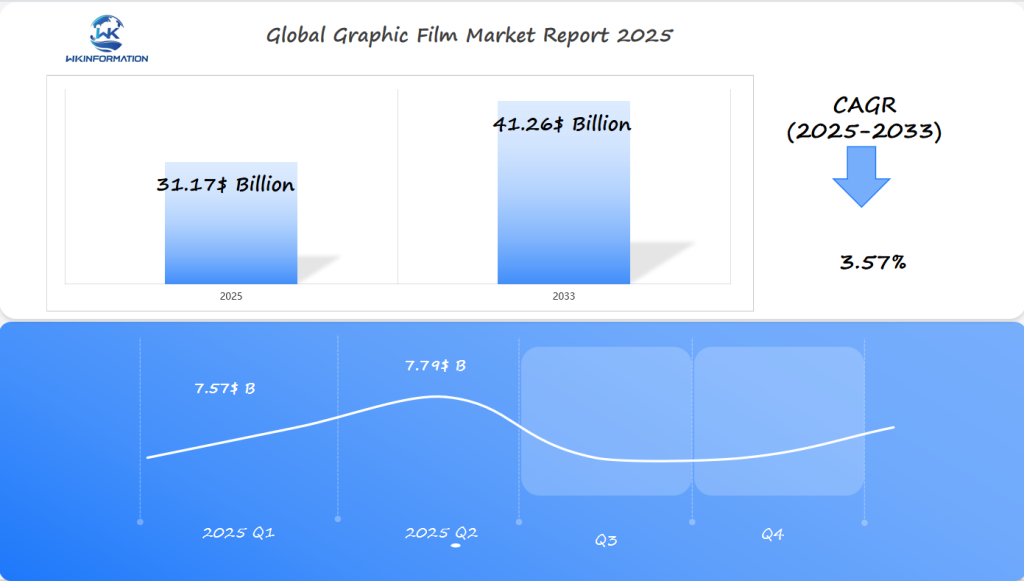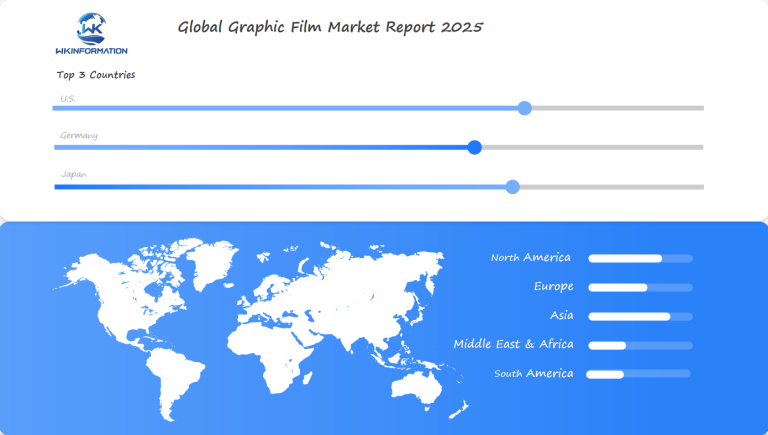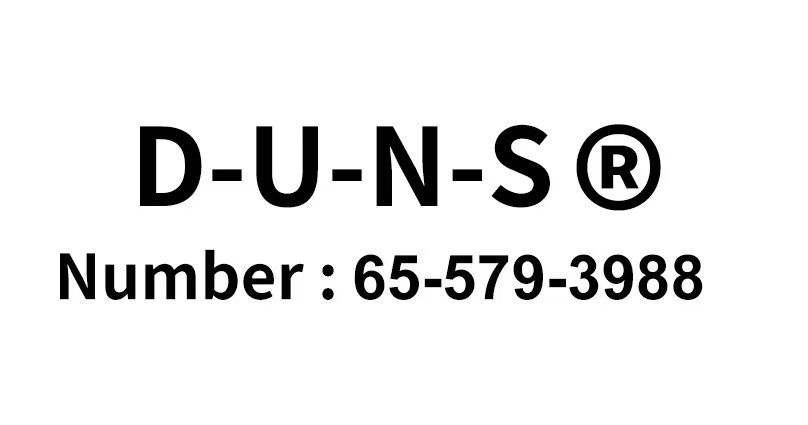$31.17 Billion Graphic Film Market Booms in the U.S., Germany, and Japan by 2025
Explore the global graphic film market trends, growth projections, and challenges, with insights into sustainable solutions and industry advancements.
- Last Updated:
Projected Market Insights for Graphic Film in Q1 and Q2 of 2025
The Graphic Film market is expected to reach $31.17 billion in 2025, with a CAGR of 3.57% from 2025 to 2033. In Q1, the market is projected to generate around $7.57 billion, driven by growing demand for advertising materials, vehicle wraps, and protective films. By Q2, the market is estimated to grow to approximately $7.79 billion, as the adoption of high-quality digital printing technologies increases. The U.S., Germany, and Japan will be key players in market expansion.
The U.S. leads in branding and advertising applications, Germany’s advanced printing technology drives demand for specialty films, and Japan’s innovation in durable and sustainable film materials supports steady growth. As companies continue to invest in visual marketing and protective coatings, the graphic film industry is poised for consistent growth across these major regions.

Understanding the Upstream and Downstream Industry Chains for Graphic Films
In the graphic film market, it’s important to know about the upstream industry chain. This means understanding where the raw materials come from and how the initial production processes work. Here are the main parts involved:
Key Components of the Upstream Industry Chain
- Raw Materials Suppliers: These are the companies that provide essential inputs like polyvinyl chloride (PVC), polypropylene (PP), and polyethylene (PE). These polymers are crucial for making different types of graphic films.
- Chemical Additives Producers: These are the companies that supply additives such as plasticizers and stabilizers. These additives are used to improve the properties of the materials.
Understanding the Downstream Industry Chain
On the other hand, we also need to understand the downstream industry chain. This chain focuses on taking those raw materials and turning them into final products that consumers can use. Here are the main players involved:
Main Players in the Downstream Industry Chain
- Manufacturers: These are the companies that take raw materials and use advanced technologies to create graphic films. Well-known companies like 3M Company and Avery Dennison Corporation play a significant role in this process.
- Converters and Printers: These businesses specialize in applying printing technologies such as flexography to customize films for specific applications.
- Distribution Channels: This refers to the networks that ensure finished products are delivered efficiently to end-users across various industries.
Every stage of this process is critical for maintaining quality and fostering innovation throughout the entire lifecycle of graphic films. By engaging with key players at each phase, we can ensure a smooth operation that meets the ever-changing demands of branding and marketing strategies in different sectors.
Key Market Trends Driving Demand for Graphic Films Across Industries
The increase in demand for branding materials is transforming various industries. In sectors such as retail, automotive, and architecture, visually appealing graphics have become essential for promotional purposes. To grab the attention of consumers, businesses are investing heavily in graphic films that offer bright colors and customizable designs.
Digital marketing influence plays a crucial role in this trend. Social media platforms, which prioritize visual content, create a need for captivating graphics that can quickly grab the attention of viewers. Brands use these platforms to expand their reach and improve visual engagement, resulting in a greater reliance on top-quality graphic films.
Applications of Graphic Films in Various Industries
Here are some specific ways in which different industries are utilizing graphic films:
- Retail Sector: Storefronts and advertising displays utilize graphic films to attract customers and communicate brand messages effectively.
- Automotive Industry: Vehicle wraps and decals not only serve branding purposes but also add aesthetic value.
- Architecture: Buildings are increasingly featuring graphic films for decorative and functional purposes, such as privacy screens or energy-efficient windows.
The Graphic Film Market is set to expand further as industries continue to recognize the value of innovative visual solutions. This ongoing shift towards digital-centric marketing strategies underscores the significance of adaptable and eye-catching graphic materials in today’s competitive market.
Challenges Faced by Manufacturers in Producing High-Quality Graphic Films at Scale
Manufacturing high-quality graphic films at scale presents various challenges that manufacturers must navigate.
1. Maintaining Consistent Print Quality
One significant issue is maintaining consistent print quality. Large-scale production often leads to variations in color consistency and sharpness, which can result in products that do not meet the exacting standards required by clients.
2. Ensuring Proper Adhesion Between Layers
Ensuring proper adhesion between layers is another critical concern. Graphic films are typically composed of multiple layers, and any failure in adhesion can compromise the film’s integrity and durability. This requires precision in both the selection of adhesives and the application process to ensure long-lasting performance.
3. Impact on Production Efficiency and Cost-Effectiveness
These challenges directly impact production efficiency and cost-effectiveness. Inconsistencies in quality can lead to increased waste, driving up costs and slowing down production timelines. To mitigate these issues, manufacturers invest in advanced technologies and stringent quality control measures, but these efforts can demand significant resources.
The graphic film market continues to grow, driven by demand across industries such as automotive and retail. Overcoming manufacturing challenges is crucial for companies seeking to capitalize on this expanding sector while maintaining a reputation for reliability and excellence.

Geopolitical Influences Shaping Pricing Dynamics Within The Global Graphic Film Market
Geopolitical factors play a crucial role in shaping the economic landscape of the graphic film market. Trade tensions between key players can lead to significant disruptions in raw material availability. For example, disputes involving major economies may result in tariffs or restrictions, impacting the supply chain and causing fluctuations in pricing within the industry.
Trade policies and agreements are crucial in determining market accessibility for manufacturers. Regional trade agreements, such as NAFTA or the European Union’s trade regulations, can either facilitate or hinder market entry and expansion efforts by standardizing tariffs and ensuring fair competition. These agreements often affect production costs directly, influencing how manufacturers strategize their operations across different regions.
Key Geopolitical Factors Affecting Pricing Dynamics
The following geopolitical factors significantly influence pricing dynamics within the global graphic film market:
- Raw Material Availability: Changes in global trade policies can restrict access to essential raw materials needed for producing high-quality graphic films.
- Pricing Fluctuations: Economic sanctions or tariffs might lead to increased production costs, which can be passed on to consumers through higher prices.
- Market Accessibility: Regional agreements streamline cross-border operations, enhancing opportunities for market penetration and growth.
Understanding these geopolitical dynamics is essential for stakeholders aiming to navigate the complex global marketplace effectively. Adapting strategies to accommodate such influences ensures resilience against potential economic disruptions, maintaining competitive advantage within the industry.
Market Segmentation: Understanding Different Types and Applications of Graphic Films
A critical aspect of the graphic film industry is its market segmentation based on polymer types, film categories, and application areas. Each segment offers unique characteristics and benefits suited to diverse needs.
Polymer Types:
- Polyvinylchloride (PVC): The most widely used polymer, known for its durability and flexibility. Perfect for vehicle wraps and outdoor signs.
- Polypropylene (PP): A lightweight polymer that is resistant to moisture, making it ideal for packaging and labeling purposes.
- Polyethylene (PE): A strong polymer with excellent resistance to chemicals, commonly used in industrial applications where toughness is necessary.
Film Categories:
- Reflective Films: Enhance visibility in low-light conditions, popular for road signs and safety applications.
- Opaque Films: Provide complete concealment, ideal for privacy screens or covering unsightly surfaces.
- Transparent and Translucent Films: Allow light passage while altering appearance. Widely used in architectural designs for decorative purposes or energy-efficient solutions.
These categories cater to a wide range of customer preferences, showing how adaptable the industry is to changing market demands. This diversity ensures that graphic films continue to be essential in various sectors, including advertising and architecture.
The Importance of Graphic Films in Packaging and Branding Solutions
Graphic films are essential in packaging solutions and branding strategies. They have the power to transform plain packaging into visually appealing displays that grab consumers’ attention. By creatively using graphic films, brands can improve their visibility on store shelves and stand out in a competitive market.
How Graphic Films Impact Branding
Graphic films offer a flexible medium for vibrant colors and intricate designs, allowing brands to express their identity with precision and style. Successful branding campaigns often take advantage of the unique qualities of graphic films to reinforce brand messages.
Case Studies: Graphic Films in Action
- A leading beverage company used reflective graphic films to create a dynamic label that changed appearance under different lighting conditions, capturing consumer interest.
- A cosmetics brand employed opaque graphic films to achieve high-contrast designs on their product packaging, enhancing the brand’s luxurious positioning with a sleek and premium look.
These examples demonstrate how graphic films play a crucial role in developing effective branding strategies. By aligning design innovations with brand goals, companies can improve visibility and foster consumer loyalty.
Global Market Trends and Regional Insights
The global graphic film market is growing and is expected to reach around USD 41.26 billion by 2033. This growth represents a compound annual growth rate (CAGR) of about 3.57% from 2025 onwards. The current market size, anticipated to hit USD 31.17 billion in 2025, shows the increasing demand in various industries.
Several factors are driving this growth:
- More focus on branding and marketing materials that use the visual appeal of graphic films.
- Strong use in the automotive sector, where vehicles use wraps and decals for both looks and protection.
- The impact of digital marketing strategies and social media platforms, encouraging businesses to use more visually appealing graphics.
Regional Insights
North America
North America, with the United States at its core, remains a pivotal region contributing significantly to revenue generation. The U.S. market’s dynamics highlight its stronghold in adopting advanced graphic film technologies, which cater largely to automotive and retail sectors.
Europe
Europe, led by Germany, plays a crucial role in technological advancements within the industry. German innovation has set a benchmark for quality and efficiency in graphic film production techniques, positioning Europe as a key player in the global landscape.
Asia-Pacific
In the Asia-Pacific region, rapid industrialization coupled with growth in automotive manufacturing has positioned it as the largest market for graphic films. Japan’s expertise in high-performance material development provides a competitive edge, reinforcing Asia-Pacific’s dominance.
These regional insights emphasize not only the geographical spread but also pinpoint specific strengths contributing to each area’s market share. With ongoing developments and investments in technology and infrastructure across these regions, the global graphic film market is poised for sustained growth.

U.S. Market Analysis: Revenue Generation and Key Applications
The U.S. graphic film market plays a vital role in the global industry, making a significant impact on revenue generation. Being at the forefront of this sector, the U.S. enjoys advantages such as technological advancements and high demand across multiple industries.
Dynamics of the U.S. Graphic Film Market
1. Revenue Contribution
The U.S. market is a major revenue generator within the global graphic film industry. American companies are leading the way in developing durable and customizable graphic films that meet the needs of various industries through their strong focus on innovation.
2. Technological Advancements
Companies like 3M Company and Avery Dennison Corporation are driving market growth with advanced technologies in film production and printing capabilities. Their commitment to sustainable practices aligns with the increasing consumer demand for eco-friendly products.
Key Applications Across Sectors
1. Automotive Sector
The automotive sector is a key driver of graphic film demand in the U.S., extensively using these films for vehicle wraps and decals. The durability and customization options available in graphic films make them perfect for enhancing vehicle appearance and branding.
2. Retail and Advertising
Graphic films play a vital role in creating attention-grabbing storefronts, billboards, and other advertising materials, thereby increasing brand visibility. Their flexibility allows businesses to implement dynamic marketing strategies that effectively engage consumers.
3. Architecture
In architectural applications, graphic films improve building aesthetics while providing practical benefits such as privacy and UV protection. These features are particularly attractive in urban areas where design innovation is a priority.
The U.S. continues to lead in generating significant revenue within the graphic film market through its wide range of applications, technological advancements, and strategic industry partnerships. As demand grows in sectors such as automotive, retail, and architecture, companies remain focused on meeting changing consumer preferences with innovative solutions.
Germany’s Influence on Graphic Film Technology: Innovations and European Trends
Germany plays a crucial role in the graphic film industry, known for its contributions to technological advancements.
Innovations in Materials and Production Techniques
Germany’s influence is primarily driven by innovations in materials and production techniques. The country’s emphasis on engineering excellence and precision has resulted in the creation of state-of-the-art solutions that improve the performance and longevity of graphic films. For example, German manufacturers have been leading the way in using advanced polymers that offer superior resistance to weather conditions and flexibility, which are crucial for applications such as vehicle wraps and architectural films.
Excellence in Production Techniques
The German market segment also stands out in terms of production techniques. Automation and efficient manufacturing processes have been widely embraced, leading to high-quality products that set industry standards. Additionally, Germany’s commitment to sustainability is evident through the implementation of eco-friendly practices, with many companies investing in renewable materials and energy-efficient production methods.
Regional Differences in Technology Adoption
Germany stands out from other European countries when it comes to adopting technology. Unlike France and Italy, which are known for their innovative design approaches, Germany focuses on technical excellence and groundbreaking ideas. This variety across regions contributes to the broader European landscape by merging artistic vision with engineering prowess.
Influence on Neighboring Markets
Germany’s approach often influences neighboring markets, encouraging them to adopt similar advanced technologies. One example of this is the integration of digital printing technologies across Europe, where German advancements have made a significant impact. These technologies enhance precision and enable more vibrant, long-lasting prints that are increasingly sought after by industries such as retail and advertising.
Setting Standards for Continuous Improvement
Germany’s leadership in technological innovations within the graphic film industry sets a benchmark that inspires ongoing improvement throughout Europe. By pushing boundaries in material science and production efficiency, it not only strengthens its own market but also uplifts the entire European graphic film landscape.
Japan’s Role in Graphic Film Innovation: Contribution to Materials Development and Asian Market Trends
Japan has always been a leader in technological innovation, and its impact on the graphic film industry is no different. The country is known for its expertise in developing high-performance materials that improve the durability, flexibility, and visual appeal of graphic films. Japanese companies have been leading the way in advancements in materials science, working on creating films that are not only visually stunning but also strong enough to endure various environmental conditions.
Key Contributions
Material Innovation
Japan’s research and development efforts have resulted in the creation of advanced polymers with superior performance characteristics. These include better resistance to UV rays, improved adhesion properties, and enhanced printing capabilities. Such innovations allow graphic films to maintain their quality over time, even in challenging conditions.
Sustainability Focus
In response to global environmental concerns, Japanese manufacturers are heavily investing in sustainable practices. This includes developing eco-friendly materials that minimize environmental impact without compromising on quality or performance.
Influence on Asian Market Trends
The innovations coming from Japan have a significant impact on trends throughout Asia-Pacific. With rapid industrialization happening in neighboring countries, there is an increasing demand for high-quality graphic films that meet international standards. Japanese expertise helps establish benchmarks for material quality and production efficiency, fostering competition and driving growth in the regional market.
The Japanese market is also important within the larger Asia-Pacific picture. As one of the biggest economies in the region, Japan plays a central role in both producing and consuming graphic films. The country’s strong industrial foundation supports a wide range of uses, from automotive wraps to architectural graphics.
Japan’s dedication to excellence and sustainability continues to shape the future of graphic films in Asia-Pacific, setting new standards for innovation and quality that resonate throughout the industry.
Future Prospects For Graphic Films: Anticipated Trends And Emerging Opportunities
The graphic film market is about to grow significantly, thanks to upcoming technological advancements and new opportunities. Innovations are expected to redefine industry standards, particularly in areas such as smart packaging solutions and vehicle wraps integrated with electronics.
Key Trends Shaping the Future
1. Smart Packaging Solutions
The integration of interactive elements within graphic films opens new avenues for consumer engagement. Smart packaging can provide real-time information and connectivity features that elevate the consumer experience beyond traditional visual appeal.
2. Vehicle Wraps with Integrated Electronics
As automotive design evolves, so do the applications of graphic films. Vehicle wraps with embedded electronics offer dynamic advertising opportunities and enhanced vehicle aesthetics, paving the way for innovative marketing strategies.
Exploration of New Markets
The expansion into new markets holds significant promise. Sectors such as architecture are exploring the use of graphic films for both functional and decorative purposes, enhancing building aesthetics while offering additional benefits like energy efficiency.
The adoption of graphic films in digital marketing campaigns is anticipated to grow, as businesses look for striking visuals to capture consumer attention across social media platforms.
These trends signify a vibrant future for the graphic film market, with numerous opportunities for industry players to harness technological advancements and expand their market reach.
Competitive Landscape: Leading Companies Driving Innovation In The Graphic Film Market
The graphic film market is shaped by several leading companies that continually push the boundaries of innovation.
- Yahua Group — China
- Poly Union Group — China
- Dyno Nobel — Australia
- Orica — Australia
- Huhua Group — China
- Schlumberger — USA/France
- NJSC NITROERG — Poland
- EPC Groupe — France
- Xinjiang Xuefeng — China
- Guotai Group — China
Overall
| Report Metric | Details |
|---|---|
| Report Name | Global Graphic Film Market Report |
| Base Year | 2024 |
| Segment by Type |
|
| Segment by Application |
|
| Geographies Covered |
|
| Forecast units | USD million in value |
| Report coverage | Revenue and volume forecast, company share, competitive landscape, growth factors and trends |
Innovation and sustainability are crucial forces shaping the future of the graphic film market. Companies are increasingly focusing on developing eco-friendly solutions, utilizing renewable materials to meet growing consumer demand for sustainable products. This commitment not only addresses environmental concerns but also opens up new opportunities for market growth.
Technological advancements continue to redefine possibilities within the industry. Enhanced printing capabilities and material performance are setting new standards, with companies like 3M and Avery Dennison leading the way in innovation.
The push towards digital transformation and smart technologies presents promising opportunities, particularly in applications like smart packaging and vehicle wraps with integrated electronics. As businesses continue to leverage these innovations, the graphic film market is expected to grow, providing both economic benefits and sustainable solutions across various sectors worldwide. The focus remains on adapting to changing consumer demands while staying committed to sustainability and technological excellence.
Global Graphic Film Market Report (Can Read by Free sample) – Table of Contents
Chapter 1: Graphic Film Market Analysis Overview
- Competitive Forces Analysis (Porter’s Five Forces)
- Strategic Growth Assessment (Ansoff Matrix)
- Industry Value Chain Insights
- Regional Trends and Key Market Drivers
- Graphic Film MarketSegmentation Overview
Chapter 2: Competitive Landscape
- Global Graphic Filmplayers and Regional Insights
- Key Players and Market Share Analysis
- Sales Trends of Leading Companies
- Year-on-Year Performance Insights
- Competitive Strategies and Market Positioning
- Key Differentiators and Strategic Moves
Chapter 3: Graphic Film Market Segmentation Analysis
- Key Data and Visual Insights
- Trends, Growth Rates, and Drivers
- Segment Dynamics and Insights
- Detailed Market Analysis by Segment
Chapter 4: Regional Market Performance
- Consumer Trends by Region
- Historical Data and Growth Forecasts
- Regional Growth Factors
- Economic, Demographic, and Technological Impacts
- Challenges and Opportunities in Key Regions
- Regional Trends and Market Shifts
- Key Cities and High-Demand Areas
Chapter 5: Graphic Film Emerging and Untapped Markets
- Growth Potential in Secondary Regions
- Trends, Challenges, and Opportunities
Chapter 6: Product and Application Segmentation
- Product Types and Innovation Trends
- Application-Based Market Insights
Chapter 7: Graphic Film Consumer Insights
- Demographics and Buying Behaviors
- Target Audience Profiles
Chapter 8: Key Findings and Recommendations
- Summary of Graphic Film Market Insights
- Actionable Recommendations for Stakeholders

Access the study in MULTIPLEFORMATS
Didn’t find what you’re looking for?
TALK TO OUR ANALYST TEAM
Need something within your budget?
NO WORRIES! WE GOT YOU COVERED!
Call us on: +1-866-739-3133
Email: infor@wkinformation.com
What is the projected growth of the graphic film market by 2024?
The graphic film market is projected to grow to USD 31.17 billion by 2025, reflecting significant industry growth and increasing importance in branding and marketing strategies.
What are the key components of the upstream and downstream industry chains for graphic films?
The upstream industry chain includes raw material suppliers, while the downstream chain involves end-users such as manufacturers and retailers. Key players at each stage contribute to the overall functioning and efficiency of the graphic film market.
What are the main reasons for the growth of the global graphic film market?
The main reasons for the growth of the global graphic film market are:
- Increased demand for visually appealing branding materials
- Advancements in digital marketing strategies
- A growing emphasis on visual engagement across various sectors such as retail, automotive, and architecture
How does Germany influence graphic film technology within Europe?
Germany plays a crucial role in driving technological innovations within the graphic film industry through advancements in materials and production techniques. Its leadership in technology adoption contrasts with other European countries, highlighting regional variations.
How has Japan influenced graphic film technology in Asia?
Japan plays a crucial role in advancing graphic film technology by prioritizing the development of top-quality materials. Its knowledge and skills not only strengthen its own standing in the Asia-Pacific region but also shape trends and innovations throughout the area.
What challenges do manufacturers face when producing high-quality graphic films at scale?
Manufacturers face challenges like:
- Maintaining consistent print quality
- Ensuring proper adhesion between layers
These issues can affect production efficiency and cost-effectiveness in the graphic film market.


